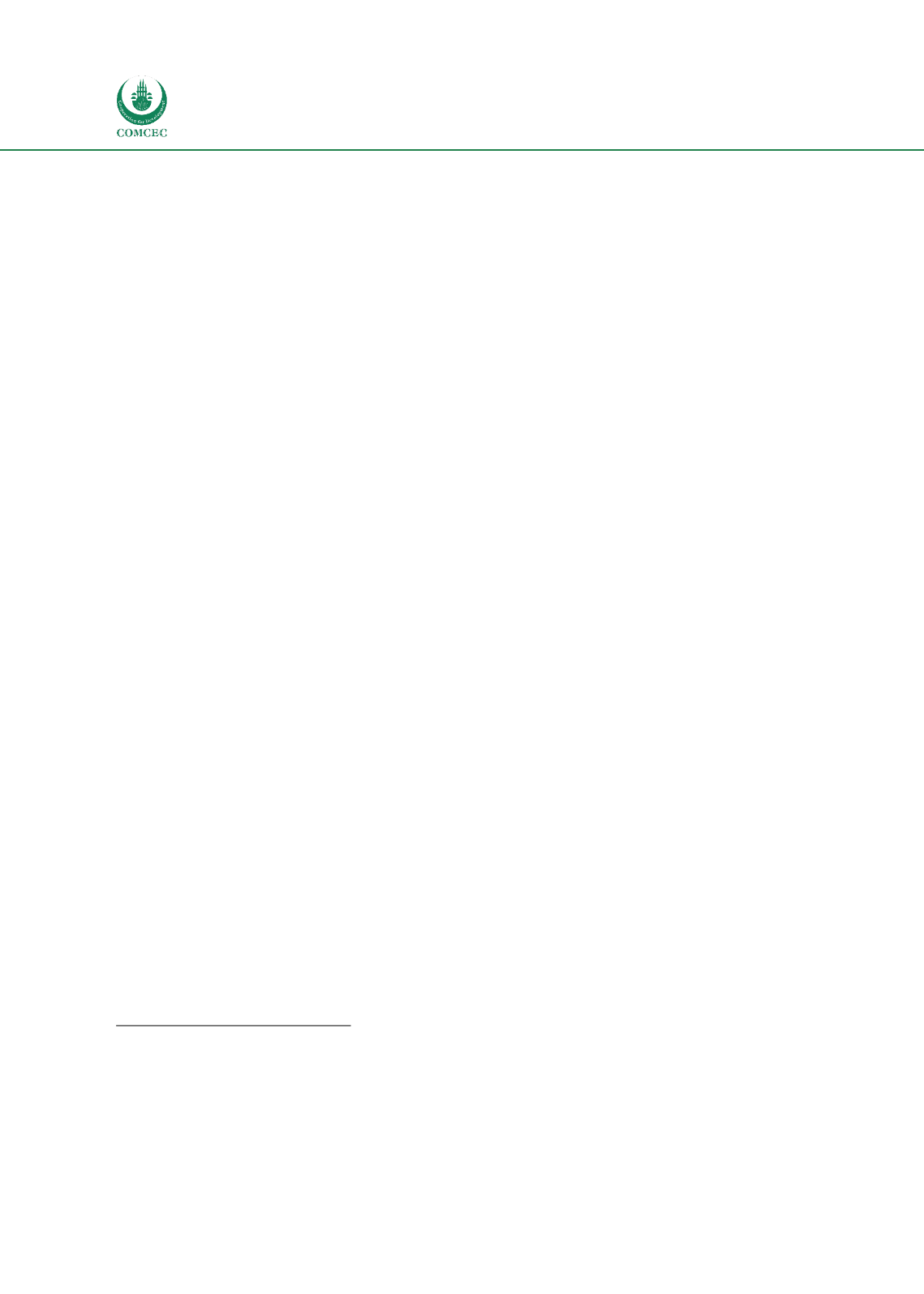

Improving Agricultural Market Performance
:
Creation and Development of Market Institutions
44
Increased competition as the Government-dominated Gambian Cooperatives Union
(GCU) now had to compete with private traders in the purchase, marketing, and export
of groundnuts;
Increased efficiency resulting from the foreign investor's operational changes and
US$3 million in capital investments;
Improved product quality as the foreign investor revamped equipment and assisted
farmers in production and handling techniques.
Produce Marketing Boards in Côte d’Ivoire
In December 2011, a Presidential decree established the rules governing the
commercialization of coffee and cocoa and regulation of the cocoa and coffee sector, and in
January 2012 a second decree created the Conseil du Café-Cacao as the “body responsible for
management, development, and regulation of the coffee-cocoa sector and for stabilization of
coffee and cocoa prices.”
85,86
Cocoa and coffee are the most important crops in Côte d’Ivoire, which is the world’s largest
producer of cocoa, accounting for about 30% of global production by weight, and the 14
th
-
largest producer of coffee, also by weight..
87
Prior to creation of the Conseil du Cafe-Cacao, CAISTAB (Caisse de Stabilisation des Prix des
Produits Agricoles) was responsible for maintaining price stability in coffee and cocoa markets
(as well as those for other agricultural commodities). Unlike marketing boards in Ghana and
Nigeria, CAISTAB did not handle tasks such as inspection, purchasing, transport, quality
control, storage and export. Instead, it paid farmers, through private agents or traders, a preset
price and sold the output on the world market, leaving most of the intermediate steps between
production and export to authorized traders. CAISTAB also allowed some private exporters to
operate under a system of quotas. By regulating farm gate and export prices, CAISTAB
effectively profited from arbitrage between the two. The difference between world and
producer prices, net of marketing costs, was the CAISTAB surplus (the revenue from cocoa and
coffee export taxes). This surplus was an important part of Government revenue: through the
early 1980s, cocoa and coffee tax revenue comprised 20 to 40% of Government revenue, but
by 1988 world prices had dropped below producer prices and the CAISTAB surplus had turned
into a deficit.
88
Côte d’Ivoire began to liberalize its cocoa market in 1999, lagging substantially behind Nigeria
(1986) and Cameroon (1991). The main strands of liberalization were restructuring of the tax
regime, elimination the CAISTAB, and allowing some backward integration by multinational
firms such as ADM, Barry Callebaut, Cargill, and Nestle.
The results of liberalization were mixed. The abolition of CAISTAB gave more power to
exporters and, theoretically, to farmers, and reduced direct state control over both farmers’
85
Presidency, Côte d’Ivoire (2011), “Ordonnance n° 2011-481 du 28 decembre 2011 fixant les regles relatives a la
Commercialisation du Cafe et du Cacao et a la Regulation de la Filiere Cafe-Cacao.”
86
Presidency, Côte d’Ivoire (2012), Decret n° 2012-06 du 16 janvier 2012 portant denomination de l'Organe de Gestion, de
Developpement, de Regulation de la Filiere Cafe Cacao et de Stabilisation des prix du Cafe et du Cacao.”
87
Benjamin, D. & Deaton, A. (1993), “Household Welfare and the Pricing of Cocoa and Coffee in Côte d’Ivoire: Lessons from
the Living Standards Surveys,” World Bank Economic Review Vol. 7, No. 3, pp. 293-318.
88
Benjamin, D. & Deaton, A. (1993), “Household Welfare and the Pricing of Cocoa and Coffee in Côte d’Ivoire: Lessons from
the Living Standards Surveys,” World Bank Economic Review Vol. 7, No. 3, pp. 293-318.


















